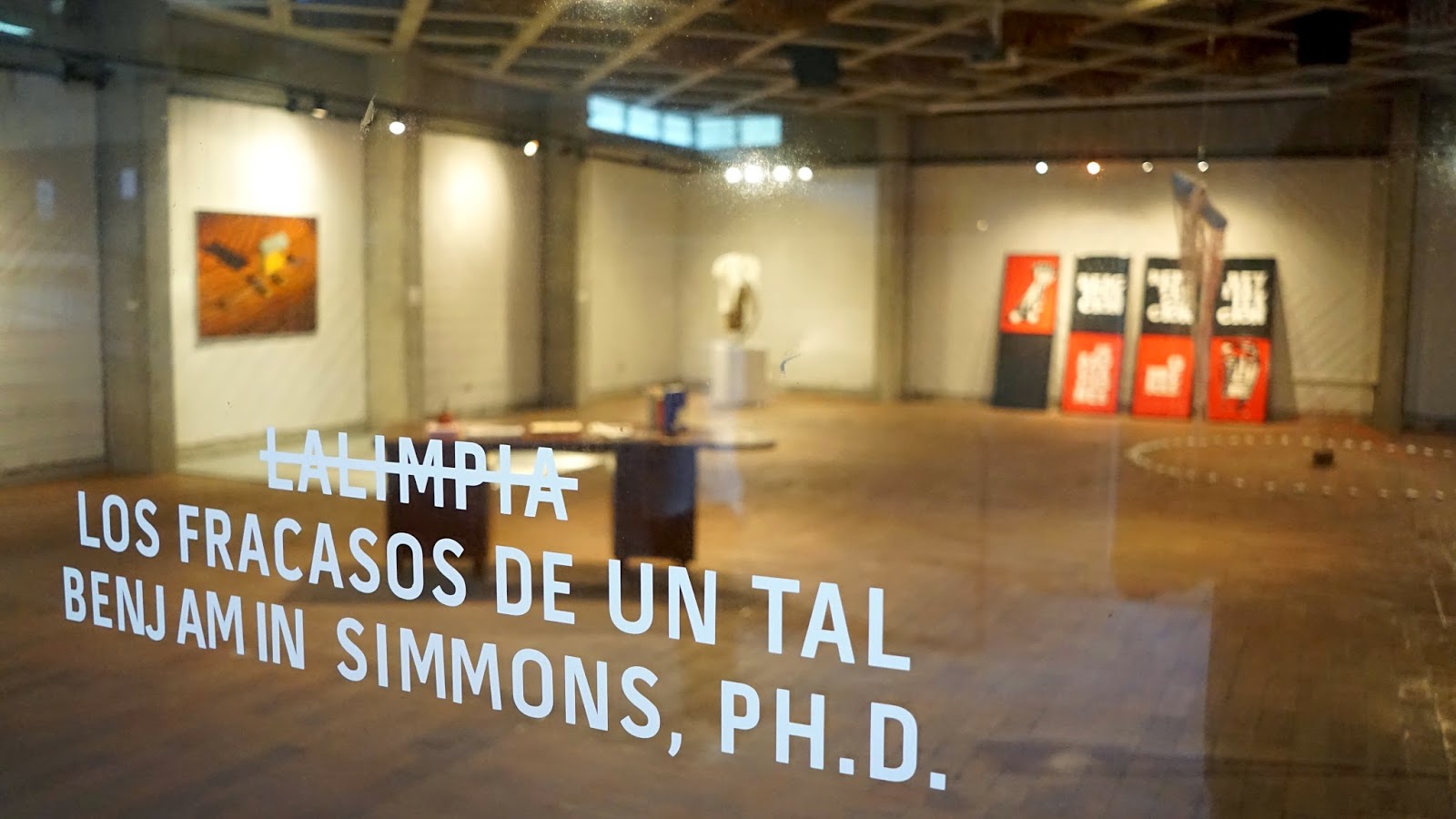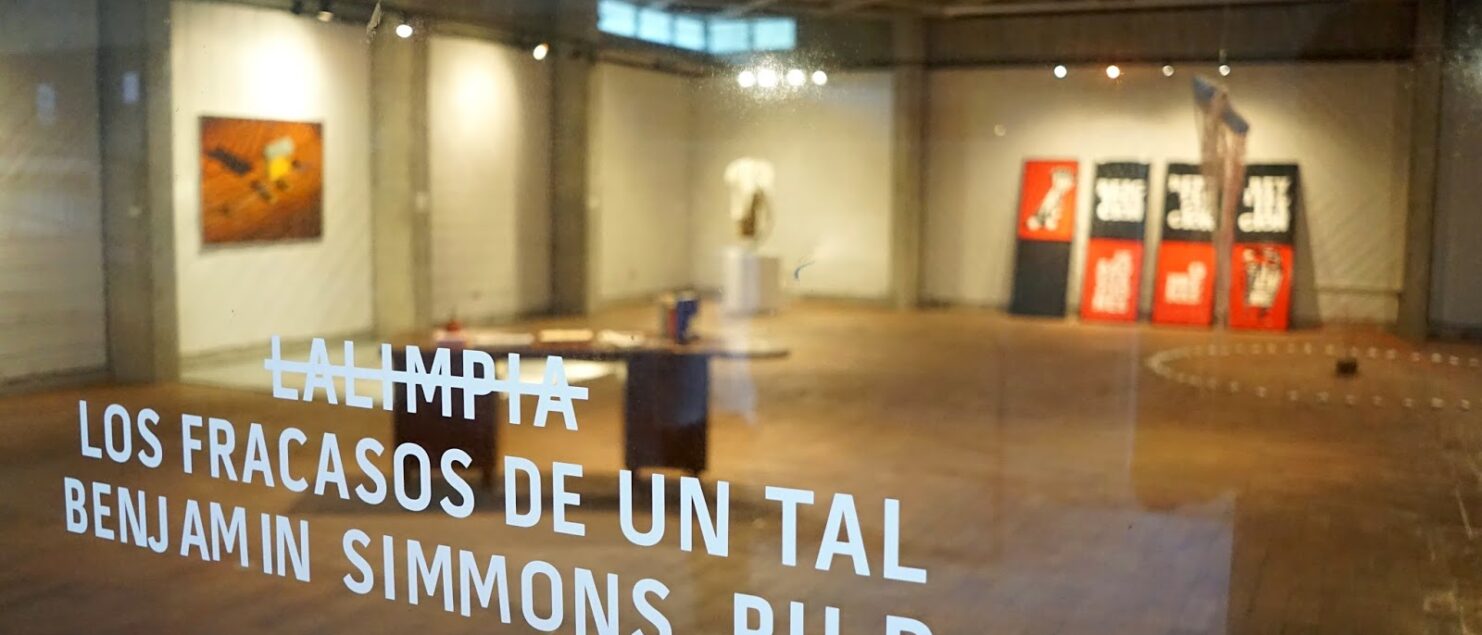The Failures of a Certain Benjamín Simmons, Ph.D

After the impulses and concerns that have animated the individual careers of most of the former members of LaLimpia in recent years, the idea of reactivating a platform for exchange and collaborative work between them and other artists was born. The Failures of One Benjamin Simmons, Ph.D brings together the work that generated that experience.
A curatorial text generally seeks to collect the fundamental premises that articulate an exhibition. But this task is complex when the sample is the result of a collaborative process that generated more questions than certainties. To gauge the dialogues established, it is important to briefly review their history.
LaLimpia produced their last collaboration in 2009, after operating as a collective for nearly 10 years. Made up of Jorge Aycart, Ilich Castillo, Ricardo Coello, Fernando Falconí, Manuel Palacios, Félix Rodríguez, Stéfano Rubira and Oscar Santillán, the group began in 2001 – according to its members –, after the exchange in the assembly of the exhibition ‘Inocentes buenas nuevas’ organized by Hernán Zúñiga at La Casa de la Cultura. In 2002, the Jefferson Foundation, the Colegio de Artistas Plásticos and the Casa de la Cultura del Guayas organized a Salón Universitario de las Artes Visuales, where the artists who would later be members of the collective participated individually.
That same year – still without a name – they organized ‘Ex-position. Alkaline criterion to fertilize a shotgun or kill hopscotch or choose a number from one to ten or (Let Felipe break it)‘, first collective project, curated by Benjamin Simmons Ph.D., an apocryphal character created by the artists.
LaLimpia’s first “official” exhibition, ‘C2H6-CH3-(NO2)3’, opened in April 2003 at the Madeleine Hollaender gallery. It is from then on that the members of the group begin to establish a clear agenda that invited them to meditate on the questionable practices and management models of local cultural institutions. They had inherited that questioning impulse from previous groups, such as La Artefactoría, from the eighties.
The name of the collective already alluded us to a purifying rite – a “shamanic cleansing” according to its members – that suggested a path of work and debt that started from the singular. From humor and utopia, LaLimpia claimed a poetics capable of mobilizing questions about the particular daily existence and the political and social reality of the moment. The collective built a path of production that knew how to navigate, between forms of direct signaling, the treatment of current events and more poetic practices, where fiction was supported as a form of self-inquiry.
LaLimpia can be understood as the amalgamation of individualities of those who formed it at various times. But the group has also been projecting its collaborative dynamics. Over the years, it promoted work initiatives with external actors. The first was the ‘aBLA’ project (2003), an alternative organization together with some young activists and other cultural agents that had the advice of the artist Saidel Brito, at that time academic coordinator of the nascent ITAE.
According to Falconí, “the ‘aBLA’ project was a kind of educational self-management exercise that made use – thanks to the help of Hernán Zúñiga – of the facilities of the House of Culture. I remember that we had sections, or divisions of work that included literature, cinema, painting, music (…). We called for talks and meetings attended by young people interested in contemporary art and we began to talk, share information and ‘curate’ projects, works, and put together exhibitions, etc. (…) It was an exercise in community pedagogy or something like that, in the absence of academic institutions. “It was a space to review and talk about contemporary issues.”
Three exhibitions emerged from the ‘aBLA’ initiative: ‘esCUPIDO’ inaugurated in the Pinacoteca of the Guayas House of Culture on February 14, 2003; ’69 Hoy’ at the Casona Universitaria, on May 29 of that same year, and ‘esCUPIDO 2’ at the Madeleine Hollaender Gallery, on February 14, 2004. All of them managed to mobilize a community spirit characterized by doing, which contrasted the lethargy that invaded the cultural institutions of the moment. It was not about art, artists, nor results constrained to the service of a specific discipline, rather it brought together young people pressed by the need to explore various ways of acting, in the midst of the urgency of manifesting personal conviction and representing the setbacks of the public sphere. Thus they managed to formulate an organizational model that stimulated questions about the state of things and the involvement of citizens with their immediate environment.
Returning to the present, the exhibition that now summons us arose with the motivation of activating micro group dynamics. The idea was not to resurrect the collective, but rather to encourage new possibilities of action among them. Falconí once pointed out that LaLimpia’s operational dynamics were determined by “a need for practical association to generate this type of ideas and works, in which authorship was obviously lost in favor of the collective.”
This kind of laboratory, which began by gathering records of works, sketches, anecdotes and unfinished projects, gradually generated a file. This year, the former members of LaLimpia shared that file with certain friends, from whom they asked for a collaboration for the current exhibition based on the reactions generated by that documentation: “We have decided to dust off the files to motivate the conversation, the question, the game, the distance… Perhaps this exercise aims to dilute, in individualities, everything that was assumed as a collective. As for collaborating with you, we want to get rid of that old idea of the owner, working with what seemed to belong to someone and no longer.”
That is why this experiment is conceived as a trial/error of a new collaborative attempt, which after going through a long process of exchange dynamics has been adapted to the exhibition format. On the one hand there is the dialogue with “external” artists through the archives, and on the other, the work tables that made possible micro-group action and the production of authorial proposals.
The former members of LaLimpia had the need to get out of the production models from which they have recently directed their individual trajectories. Therefore, the spirit of this search went beyond reviving once again complicity and collective imagination, to renew the commitment to self-questioning, which they consider a fundamental part of their artistic practice.
Romina Muñoz
Exhibition Curator

